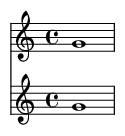Perfect Unison: The Foundation of Musical Harmony
The perfect unison is the most fundamental interval in music theory. It occurs when two notes of the same pitch are played simultaneously. This interval serves as the building block for all other intervals and harmonies in music.
What is a Perfect Unison?


A perfect unison is defined as two notes of identical pitch sounding together. For example, when two singers or instruments play the same C note at the same time, they are producing a perfect unison.
Technical Construction
The perfect unison has these characteristics:
- Interval size: 0 semitones
- Ratio: 1:1 (identical frequencies)
- Quality: Perfect consonance
Historical Significance
The concept of unison has been important since ancient times:
- Used in Gregorian chant for pure, undivided melodic lines
- Fundamental to early polyphony in medieval music
- Remains crucial in all musical traditions worldwide
Practical Applications
In Classical Music
Perfect unisons are used for:
- Orchestral tutti sections
- Creating powerful melodic statements
- Emphasizing important musical moments
In Jazz
Jazz musicians use unisons for:
- Head arrangements
- Horn section hits
- Creating tight ensemble sounds
In Rock and Pop
Common uses include:
- Guitar doubling vocal melodies
- Creating powerful choruses
- Thickening instrumental textures
Ear Training Exercises
Beginner exercises:
- Play two identical notes on piano and listen carefully
- Sing along with a sustained note from an instrument
- Identify unisons in simple melodies
Advanced exercises:
- Recognize unisons in dense musical textures
- Sing unisons with varying timbres
- Identify unisons in orchestral works
Famous pieces using perfect unisons:
- Beethoven's Symphony No. 5 opening
- The Beatles' "Twist and Shout" chorus
- Miles Davis' "So What" head melody
Common Progressions
Example chord progression using unisons:
C (C-C) | G (G-G) | Am (A-A) | F (F-F)
This shows how unisons can be used in basic chord structures.
Conclusion
The perfect unison, while simple in concept, forms the essential foundation for all musical expression. Mastering its recognition and application is crucial for any developing musician.
